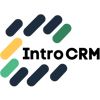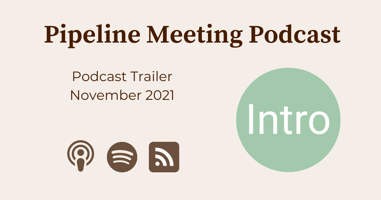Host Harris Kenny introduces the show, Pipeline Meeting, in this trailer recorded November 2021. To...
12 tips on using scheduling software for sales
As a company that books meetings for a living, you could say we geek out when it comes to scheduling and productivity software.
On the surface, these may seem like simple products that allow you to see when someone is available and book a meeting. However, under the surface, there is so much more to think about.
To explore this topic, we asked a panel of experts to weigh in and share their tips on how they use meeting scheduling software for sales. Some ideas are software platform-specific, most are agnostic.
While many of these ideas are complementary, others are at odds with each other. Ultimately, it's your call.
To kick things off, we want to weigh in on HubSpot meetings.
Consider the Bigger Picture with HubSpot Meetings
Meetings are a means to an end. They are a way of developing relationships with your customers. So consider the data that goes along with any given meeting, and how that fits into the customer journey.
HubSpot helps you consider the bigger picture by allowing meeting data to live alongside other data. This can provide tighter feedback loops to marketing, signals to sales when to re-engage with cancellations and no-shows, and it keeps things simple with everything in one place.
If you’re using HubSpot for your sales, marketing, and service teams, this last point is an especially useful one. You can download the HubSpot mobile app and even download the HubSpot mobile keyboard for quick access to your meeting links.
Standardize their Use Across the Organization
Scheduling meetings the traditional way, whether they are within the company or outside, involves a lot of back and forth. The challenges are even more in a remote or hybrid work environment where different personnel, teams, and clients follow different work schedules and time zones.
A blanket adoption of the right scheduling tool helps in streamlining the timelines of core operations, allows teams to coordinate work calendars, and enables personnel to prioritize client schedules.
Riley Beam, Douglas R. Beam, P.A.
Time Block Using SavvyCal
The time block feature in SavvyCal can be used by syncing designated calendar events and your SavvyCal availability. Meetings can be automatically scheduled in the time block assigned for meetings. Plus, you can easily update your availability on the fly in your calendar app, without having to open the SavvyCal web app.
Samantha Odo, Precondo
Check Your Customers' Requirements
Check your customers' requirements to ensure you’re choosing a tool that works for them. Your scheduling tool will integrate with other tools, like meeting software.
Is the audio/video quality high? How many participants may attend? Is remote screen sharing allowed? Is it possible to collaborate real-time on professional documents? Does it support data encryption?
Do not hesitate to test the different applications to find the right tool for you.
Ilija Sekulov, Mailbutler
Ditch Half-hour Blocks for 15 Minutes
One of the easiest and most effective ways of getting more out of your meeting scheduling software, especially in terms of locking up more calls and deals, is to ditch the traditional half-hour meeting for 15 minutes. Doing this has two major advantages.
For one, it frees up your calendar to schedule more calls throughout the day. Essentially, by making every call 15 minutes instead of 30 minutes, you have twice the capacity for calls.
And secondly, you've got a better chance of locking in a call with a prospect sooner rather than later. The longer you wait, the more likely you are to lose your lead. By using 15-minute blocks, there’s a better chance you can find a window in your prospect's calendar and fit a call in.
This will speed up your funnel and help close more deals. In my opinion, everyone should be defaulting to 15-minute calls these days.
John Ross, Test Prep Insight
Save Standardized Email Follow-ups for You, Not Client
Meeting scheduling software can be a valuable tool for assisting you to close the deal–but keep the email reminders for yourself, not your client.
Many of the meeting scheduling softwares allow for specialized, effortless coordination of scheduling between multiple partners, but in general, your clients prefer to have a personal touch when it comes to sales follow-ups.
Including a link to their scheduling interfaces is a great idea in your follow up email, but don’t rely on boilerplate software-produced meeting reminders to be your best strategy for closing sales.
Rob Bartlett, WTFast
Let Customers Land On a Direct Booking Option
Adding a meeting scheduling widget to your best landing pages enables highly interested prospects to book a meeting at their convenience.
While landing pages typically include a web form requesting visitors to offer up their contact info so that your sales team can follow up via email, adding a direct booking option makes scheduling a face-to-face just a few clicks away.
Leads can schedule a discovery meeting directly from the landing page for a day and time that suits their schedule. This automation provides a higher level of customer service and saves you time.
Daniel Tejada, Straight Up Growth
Schedule Continuous Meetings Without Gaps
We tend to have a break of half an hour to an hour after every meeting to rest, but over time, I have observed that it's a waste of time. When you have gaps in between, you probably won't be able to do any other meaningful work.
When you take continuous meetings, you get a proper flow of what to say and how to say it, which will help in closing more deals. This gives a better impression of you in front of your clients and it saves your time and effort. It helps you with learning time management and taking effective meetings as well.
The best way to do this is to allow yourself a day or two just for meetings. This way you can focus on other work for the rest of the remaining working days. And it will save you from the distraction of meetings as well.
Meera Watts, Siddhi Yoga International Pte. Ltd.
Use Calendly as Your CTA
In your marketing campaigns, try using Calendly as your CTA, allowing prospects to schedule time with your sales team directly. This can help accelerate your sales cycle and may even help you close more deals.
Katie Lyon, Allegiance Flag Supply
Allow People to Book Meetings Through Chatbots
Set up a chatbot on your website and make it easy for people to book meetings with you through this platform. Some people even prefer this means of communication.
While there are other ways you can provide scheduling links to people, remember that chatbots are often one of the first things people notice when they are included on the homepage of websites.
Drew Sherman, RPM
Make Use of Reminders
Most sales reps would feel uncomfortable sending both a follow-up email and an SMS reminder about a meeting. Scheduling software will 'chase' your prospects to ensure they do not forget about their appointment.
Don't view this as a nuisance to people. They booked a meeting with you and might struggle to remember it if they're overwhelmed with tasks or not used to meetings outside their regular schedule. Sending them gentle reminders on diverse channels ensures the message will be seen in time. Dropping your no-show rate is one of the keys to closing more deals.
Georgi Todorov, ThriveMyWay
Limiting the Schedule
It's important to know when to start and most importantly when to stop. Fix the proper timing of the meeting from start to end and make sure that the meeting ends before the time is important.
First, it will help you to keep the meeting effective and around the topic as much as possible. Second, since the client knows that you'll be done in the given time without extending it, they're more likely to schedule the meeting since they can plan their day. Lastly, the client will know you care about them and value their time.
Isaac Robertson, Total Shape
Special thanks
Special thanks to the team at Terkel (now Featured)—whose community-driven content platform made it easy to get expert insights for this article—and the contributors for sharing their time.
We learned from the contributors to this piece and made several changes to how we manage meeting scheduling software. We encourage you to check Terkel (now Featured) out if you’re looking to answer questions for your site or to get published yourself.
And with that, what did we miss? Let us know, we’d love to hear from you.

